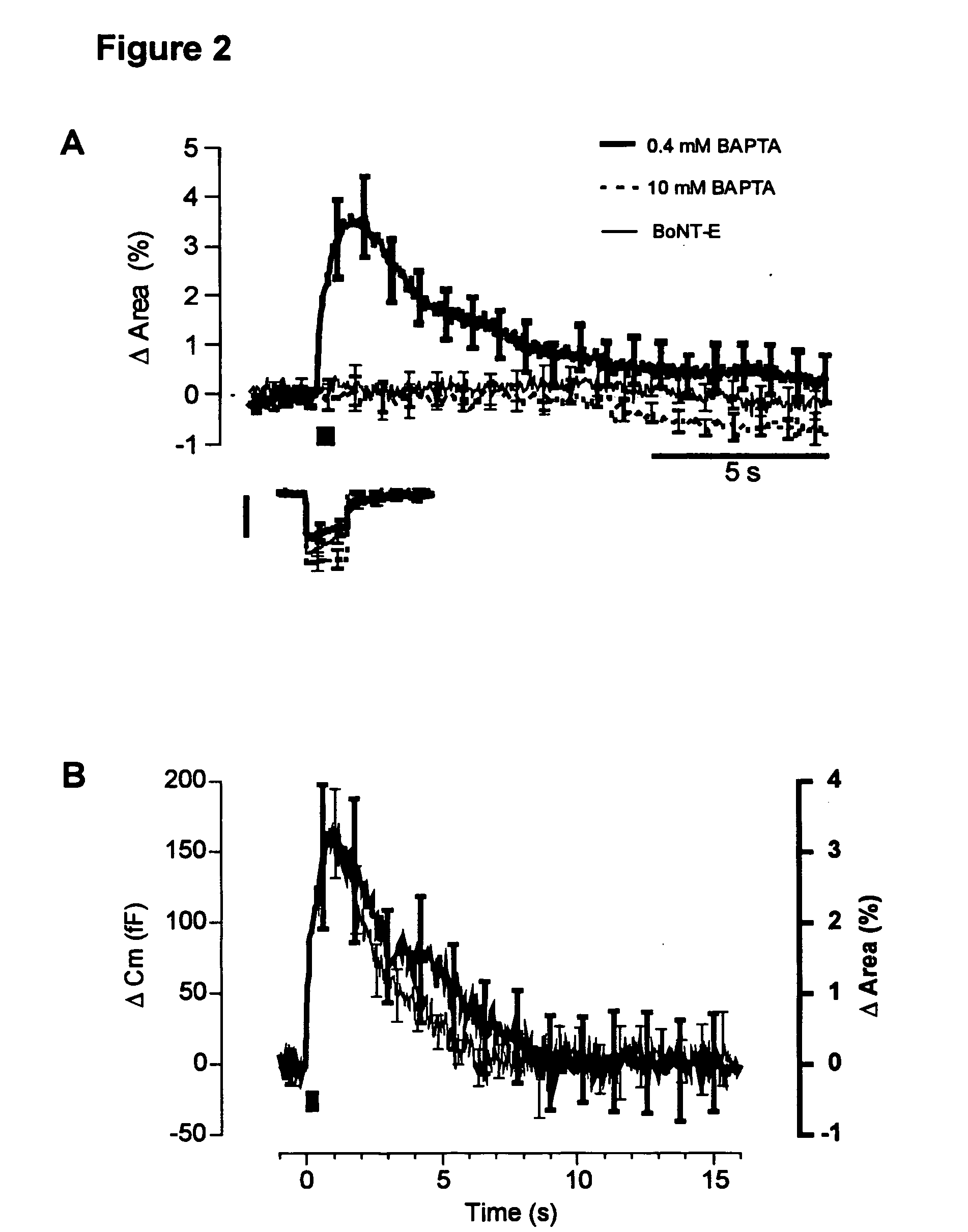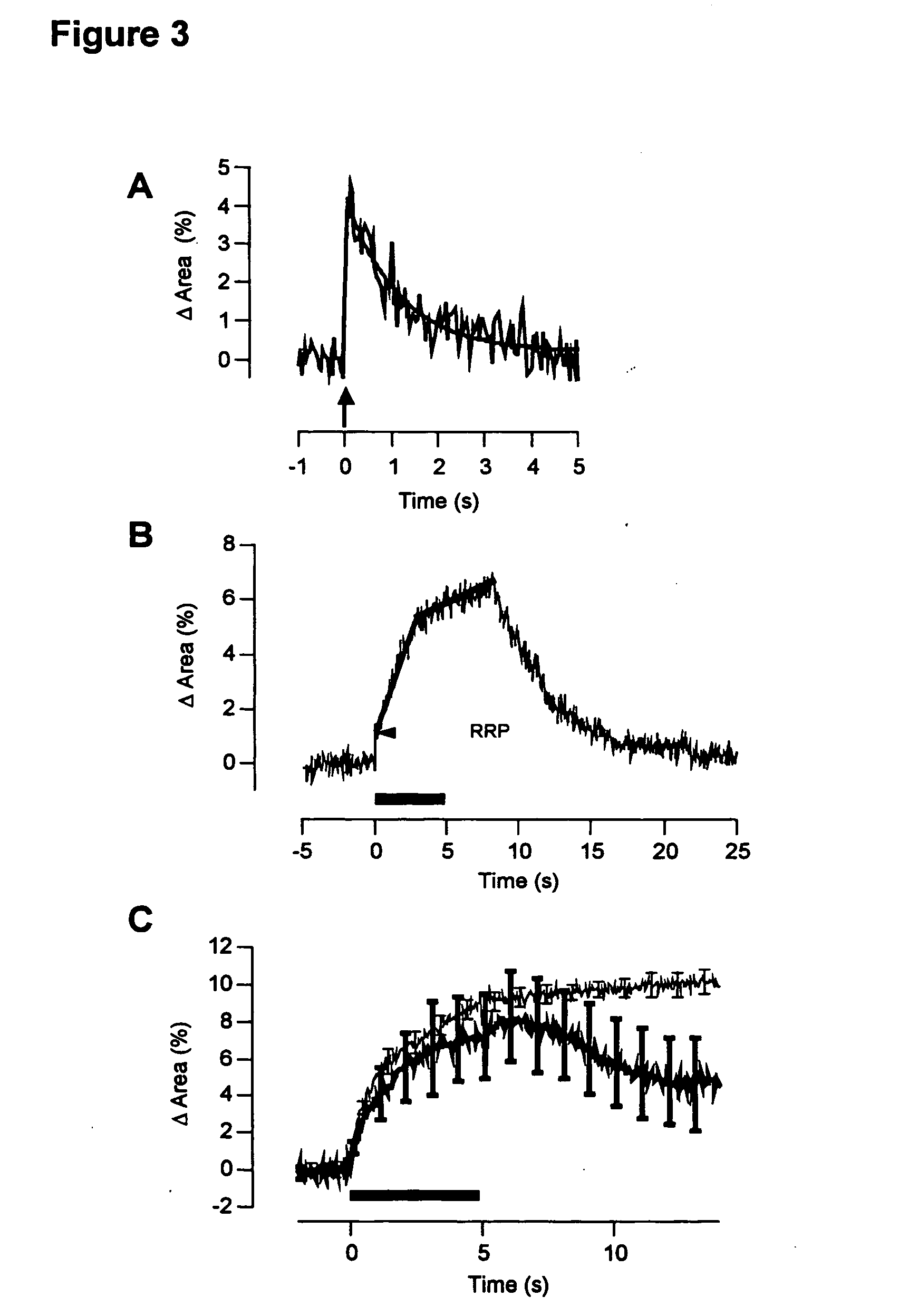Methods and systems for monitoring cell exocytosis or endocytosis
a cell exocytosis and cell technology, applied in the field of methods and systems for monitoring cell exocytosis or endocytosis, can solve the problems of slow and specificity, inability to easily apply single cells, and high cost of reagent use, and achieve the effect of cheap and easy to implemen
- Summary
- Abstract
- Description
- Claims
- Application Information
AI Technical Summary
Benefits of technology
Problems solved by technology
Method used
Image
Examples
Embodiment Construction
[0099] Experimental Procedures
[0100] Interference Reflection Microscopy
[0101] The theory of image formation has been described in detail by Izzard and Lochner (1976) and Verschueren (1985). The method depends on the fact that light is reflected at the interface between media of different refractive indices. When a cell on a coverslip is observed under epi-illumination using an oil-immersion objective, the first two interfaces where the light is reflected are the glass-solution and the solution-cell boundaries (FIG. 1A). If the thickness of the aqueous solution is of the order of the wavelength of light used (λ), the two reflected beams, R1 and R2, interfere. The optical path difference (Δ) between R1 and R2 depends on the distance between the interfaces (d). If d=0, Δ=λ / 2, and there is maximum destructive interference. The two beams are half a wavelength out of phase because R1 is reflected at the interface between a medium of high refractive index (glass, n1) and lower refractive...
PUM
| Property | Measurement | Unit |
|---|---|---|
| diameter | aaaaa | aaaaa |
| diameters | aaaaa | aaaaa |
| diameters | aaaaa | aaaaa |
Abstract
Description
Claims
Application Information
 Login to view more
Login to view more - R&D Engineer
- R&D Manager
- IP Professional
- Industry Leading Data Capabilities
- Powerful AI technology
- Patent DNA Extraction
Browse by: Latest US Patents, China's latest patents, Technical Efficacy Thesaurus, Application Domain, Technology Topic.
© 2024 PatSnap. All rights reserved.Legal|Privacy policy|Modern Slavery Act Transparency Statement|Sitemap



